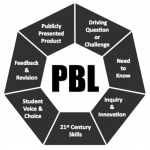Digital storytelling is a powerful tool that can be used to motivate creativity and learning in the classroom. By combining narrative with digital media, students can create engaging and informative stories that capture their imagination and deepen their understanding of the subject matter. In this article, we will explore the benefits of digital storytelling and provide some practical tips for incorporating it into your teaching.
What is Digital Storytelling?
Digital storytelling is the practice of using digital media to tell stories. It can involve a variety of formats, including video, audio, animation, and interactive presentations. Students can use digital storytelling to create stories about their own lives, historical events, scientific concepts, or anything else that interests them.
Benefits of Digital Storytelling in the Classroom
There are many benefits to incorporating digital storytelling into the classroom. Here are just a few:
- Increased Engagement: Digital storytelling can help to increase student engagement by providing them with a creative and interactive way to learn.
- Deeper Understanding: When students create their own stories, they are more likely to remember and understand the information they are learning.
- Improved Communication Skills: Digital storytelling can help students to develop their communication skills, both written and oral.
- Enhanced Creativity: Digital storytelling allows students to express their creativity and imagination in a unique way.
- Collaboration: Digital storytelling projects can be done individually or in groups, providing opportunities for students to collaborate and learn from each other.
How to Incorporate Digital Storytelling into the Classroom
Here are some tips for incorporating digital storytelling into your teaching:
- Start with a good story. Encourage students to brainstorm ideas and choose a topic that they are passionate about.
- Provide students with the necessary tools and resources. This may include software, hardware, and online tutorials.
- Guide students through the storytelling process. Help them to develop their ideas, create a storyboard, and produce their digital story.
- Provide opportunities for students to share their stories. This could be done in class, online, or at a school event.
- Assess student work. Provide feedback on the content, creativity, and technical aspects of their digital stories.
Tools for Digital Storytelling
There are many different tools that can be used for digital storytelling. Here are a few examples:
- Video editing software: iMovie, Adobe Premiere Pro
- Animation software: Powtoon, Animaker
- Audio recording software: Audacity, GarageBand
- Presentation software: PowerPoint, Google Slides
- Interactive storytelling platforms: Twine, Inklewriter
Examples of Digital Storytelling in the Classroom
Here are a few examples of how digital storytelling can be used in the classroom:
- History: Students can create digital stories about historical events or figures.
- Science: Students can create digital stories to explain scientific concepts or processes.
- Language Arts: Students can create digital stories based on their favorite books or poems.
- Foreign Language: Students can create digital stories to practice their language skills.
Conclusion
Digital storytelling is a powerful tool that can be used to motivate creativity and learning in the classroom. By incorporating digital storytelling into your teaching, you can help students to develop their critical thinking, communication, and creativity skills.



